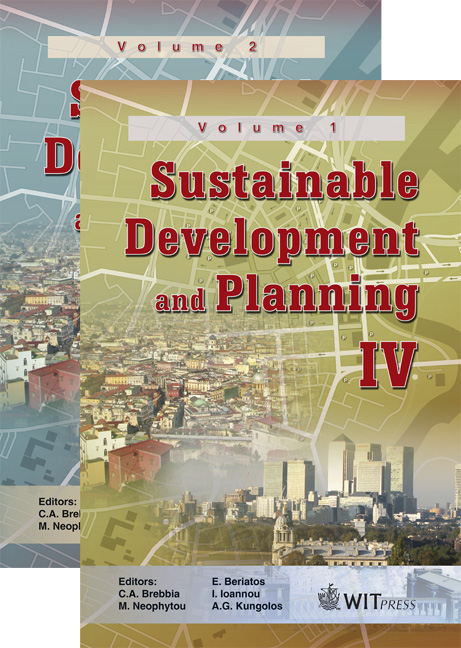Islamabad, A Town Planning Example For A Sustainable City
Price
Free (open access)
Transaction
Volume
120
Pages
11
Page Range
75 - 85
Published
2009
Size
2,527 kb
Paper DOI
10.2495/SDP090081
Copyright
WIT Press
Author(s)
I. M. Frantzeskakis
Abstract
Islamabad, the new Capital of Pakistan, planned by Constantinos A. Doxiadis and Doxiadis Associates in the late 1950s, is now a fast-growing city of about 1.5 million inhabitants, forming, together with the adjacent old city of Rawalpindi and a National Park, a Metropolitan Area (Greater Islamabad/Rawalpindi Area) of about 4.5 million inhabitants. This paper presents the combined land use–transportation planning of Islamabad, within the broader framework of the C.A. Doxiadis Ekistics theory. An evaluation of the results follows, based on a visit by the author and on more recent information. The advantages of the clear hierarchy of residential communities, of the related functions and of the transport system are apparent in the segregation of the various categories of movements (i.e. high/low speed Road Traffic, Public Transport, Bicycles, Pedestrians, etc.) and in the reduction of trip lengths. They will be more and more apparent as the urban area expands and the population and car ownership increase. With proper management of traffic and demand, the road network will not be subject to the capacity and related serious environmental problems observed in almost all large cities of the world. The present quality of life in Islamabad is made apparent from the satisfaction expressed by the people who live and work there and by the wish of others to reside in the new city. Islamabad is a \“unique” example of a large new city \“planned for the future and built for the present”, fully respecting the long-term planning. Keywords: urban planning, sustainable city, sustainable transportation, new cities.
Keywords
urban planning, sustainable city, sustainable transportation, new cities.





